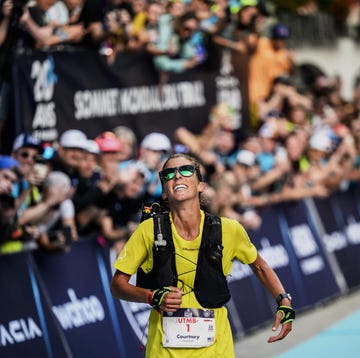Running is for everyone – and everything, as it now happens.
That’s because China has just staged a half marathon where humans weren’t the only participants. In addition to about 12,000 living, breathing runners, this race also welcomed 21 humanoid robots to its start line.
This half marathon, which took place in Beijing’s high-tech manufacturing hub, E-town, on Saturday (20 April), is believed to be the first running event of its kind and a landmark moment for the Chinese robotics industry. Although the humans and robots ran along separate tracks, likely for safety reasons which you’ll appreciate better in a moment, it was the first time that these two types of participants have taken part in the same race – and it proved that bipedal robots can ‘run’ a significant distance in real-world conditions.
What everyone's reading
That said, the robots’ performances on race day were – you could say – chaotic, if not flamboyantly underwhelming. (If you can remember the earlier episodes of the great TV programme that was Robot Wars, imagine that, but without Craig Charles at the helm.)
For starters, only six of the 21 competing robots – all of which had to be bipedal rather than on wheels, as per event rules – successfully completed the course. The best of the bunch was a humanoid called Tiangong Ultra, developed by the Beijing Humanoid Robot Innovation Center, which ‘won’ the robot race in 2:40.
Even, better Tiangong Ultra crossed the finish line before the human cut-off time of three hours and 10 minutes, making it the only robot to qualify for a human participation award. It was the tallest robot in the field, too, standing level to many human adults at 5’9”. By contrast, the shortest robot participant – which wore a blue and white tracksuit and amenably waved at spectators every few seconds – was just 2’5” tall.
For context, the men’s and women’s winners, who are both humans from Ethiopia, covered the same half marathon course in 1:02:36 and 1:11:07, respectively.
Human half marathon runners usually fuel up on energy gels and crowd support mid-race. Humanoid Tiangong Ultra, meanwhile, sustained itself to the finish line thanks to three sets of battery changes. Not quite self-sufficient, Tiangong Ultra – and indeed all the robots in Saturday’s race – were accompanied by two or three human operators to ensure that they remained, quite literally, on course and in one piece.
As it happens, these operators spent most of the race frantically changing their robots’ battery supplies, plugging instructions into control panels and spraying the robots with cool liquid in a fruitless bid to prevent them from overheating. What’s more, most of the robots fell over at least once along the route, with even the victorious Tiangong Ultra taking a tumble.
To save weight and reduce the burden on their motors, many of the robots were missing fingers and even heads, while some robots wore knee pads to protect their legs when they inevitably fell over. Some had the capacity to dance and do backflips, too – because, why not?
One propellor-powered robot, however, was much more reckless as it careered into a barrier and pushed over an engineer shortly after starting. Another humanoid, called Xuanfeng Xiaozi, kept itself going for longer, but suffered increasingly more breakdowns as the race went on. Eventually, it malfunctioned and fell over with such force that its head became dismembered from its body, forcing its human operators to gaffer tape it back on.
Whether you view it as calamitous and comedic, or an example of cutting-edge technology and innovation at work, this human versus humanoid race has certainly turned heads – and it might not be the last of its kind. Either way, Jakob Kiplimo and Letesenbet Gidey can breathe easy in the knowledge that robots won’t be breaking their half marathon world records anytime soon.














